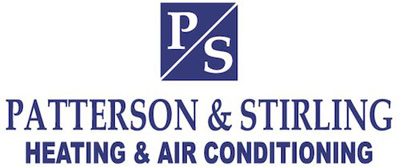
Would you believe that more than one-half of your home’s energy costs are from your heating and cooling? This is the reason why it’s critical to maintain an energy-efficient HVAC system.
Furnace efficiency standards were last modified to an Annual Fuel Utilization Efficiency (AFUE) rating of 80% in 2015. This rating system calculates how effective your furnace is at natural gas into heat. An AFUE rating of 80% means your furnace will waste about 20% of the fuel it uses while creating heat.
In 2022, the U.S. government proposed new energy-efficiency standards for residential gas furnaces that would greatly reduce emissions, save customers money and promote sustainability.
This proposal is expected to:
- Save Americans $1.9 billion annually.
- Cut carbon emissions by 373 million metric tons and methane emissions by 5.1 million tons over the next 25 - 30 years, the equivalent of what 61 million homes emit yearly.
Starting in 2029, the updated rule would demand all new gas furnaces to feature AFUE ratings of 95%. This means furnaces would combust nearly 100% of the gas into usable heat.
With these facts in mind, you may be asking yourself "what happens to my existing furnace"? For the time being, very little, as the proposed rule won't go into effect until 2029 at the earliest and does not affect furnaces that are already in use.
But if you need furnace replacement in soon, highly energy-efficient furnaces are ready and available. Find out how these furnaces can help you save on energy bills now.
Guide to Condensing Furnaces
How Condensing Furnaces Work
A condensing furnace is a kind of heating system that uses a secondary heat exchanger to trap wasted heat from the furnace's exhaust gases. This reduces the extent of energy wasted, improves energy efficiency and lowers CO2 emissions. It also will take less natural gas to produce the same amount of heat when comparing one to other types of furnaces.
How Condensing Furnaces Differ from Non-Condensing Furnaces
The main difference between a condensing furnace and a non-condensing furnace is that the former uses a secondary heat exchanger to collect any wasted heat from its exhaust gases, while the latter does not.
How Long Condensing Furnaces Last
The life span of a condensing furnace is dependent on the brand, model and other factors. In most cases, a condensing furnace is likely to last between 10-20 years with sufficient maintenance and regular service. If your heating system doesn’t have regular furnace maintenance, the equipment may have a significantly shorter life span.
Why Condensing Furnaces Require a Higher Investment
Generally, condensing furnaces type of system is a lot more efficient than conventional furnaces, as it only utilizes the minimum amount of energy necessary to heat your home, saving you money in the long run.
Most variable-speed furnaces are condensing furnaces, although a few are available in non-condensing models with lower AFUE ratings. If a manufacturer wants a furnace to be classified as a condensing furnace, it must offer an AFUE rating of 90% or higher.
Do Variable-Speed Furnaces Run Nonstop?
A variable-speed furnace doesn’t run all the time. Instead, it runs at different speeds according to the temperature in your Erie home as well as the amount of energy it requires to reach that temperature.
When sufficient energy is required to maintain your preferred temperature level, the furnace will increase to a higher speed to handle the demand. Doing this will ensure more efficient heating in your home while also offering quieter operation.
Guide to Two-Stage Furnaces
Two-Stage Furnaces: What They Are and How They Work
As the name suggests, a furnace with two levels of operating (high or low) is called a two-stage furnace. On the low stage, the furnace operates at a reduced capacity as a way to maintain the preferred temperature at your home more efficiently. During the high stage, the furnace will instead function at peak capacity to satisfy demands for increased heat. With a two-stage furnace, you can enjoy greater energy efficiency and steady temperatures all across your home.
While two-stage furnaces are exceptionally efficient, not all all models are condensing furnaces.
Does a Two-Stage Furnace Run All the Time?
A two-stage furnace does not stay on indefinitely. In the low stage of operation, the furnace operates at reduced capacity in order to sustain a desired temperature more efficiently within your home. When a greater demand for energy is needed to reach the set temperature, the unit switches to its high stage and runs at full capacity. Because of this, two-stage furnaces are able to help reduce energy costs without operating constantly.
Comparing Two-Stage and Variable-Speed Furnaces
Two-stage furnaces have two stages of operation, low and high. During the low stage, the furnace works at reduced capacity as a way to uphold a desired level of comfort within your home. When additional warmth or cooling is necessary, the furnace will change over to its high stage and operate at peak capacity.
Variable-speed furnaces, meanwhile, can work at a variety of speeds in order to uphold a comfortable temperature at home. With more options for temperature settings, you also have more flexibility for heating you home and can enjoy greater savings on energy bills.
Differences Between One- and Two-Stage Furnaces
One-stage furnaces have a single stage motor and operate either at full capacity or not at all. In other words, the furnace is always running in order to maintain a desired level of comfort at home.
Two-stage furnaces, on the other hand, have two stages of operation, low and high. During the low stage, the furnace runs at lower capacity in order to maintain the desired temperature more efficiently. When more warmth or cooling is necessary, the furnace will change over to its high stage and operate at peak capacity.
Arrange Your Furnace Install Appointment with Patterson & Stirling Today
Modern furnace technology can be confusing. That’s why Patterson & Stirling professionals are here to help with a no-obligation, no-pressure quote for furnace installation. We’ll assess your home, your heating requirements and your budget before helping you find the right solution. Get in touch with us at 814-308-0416 to get started today!


